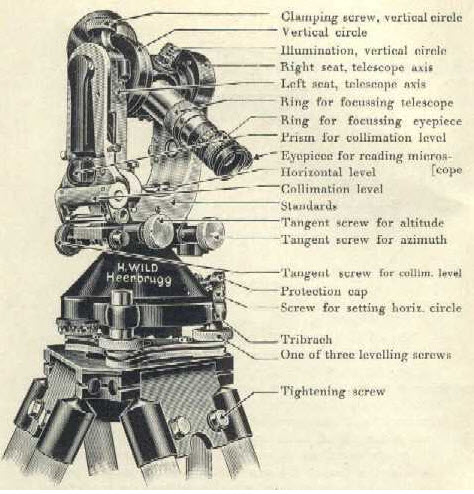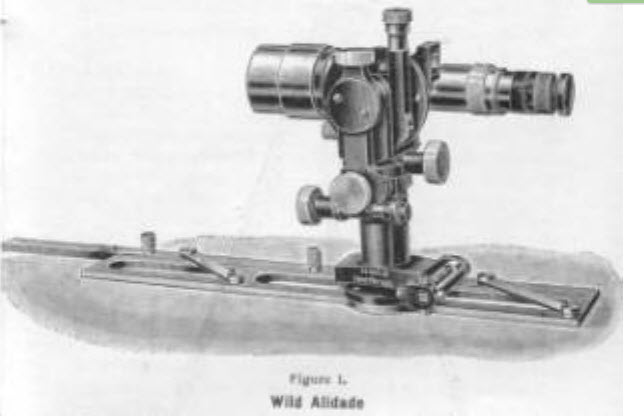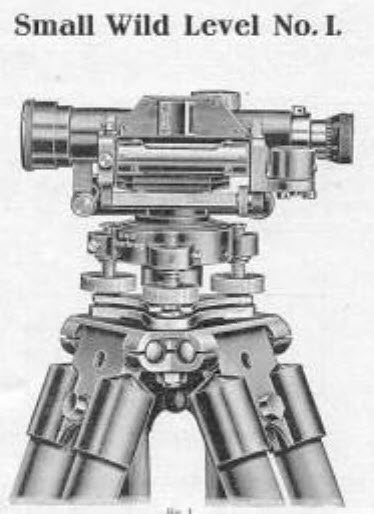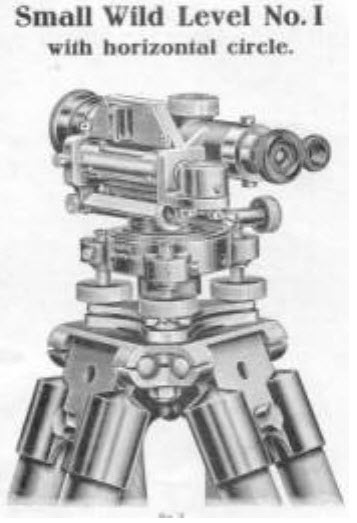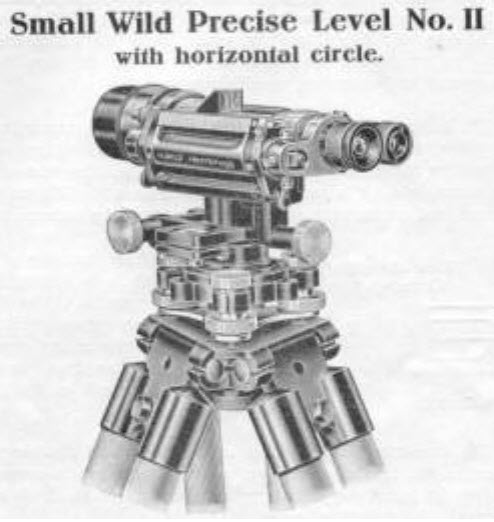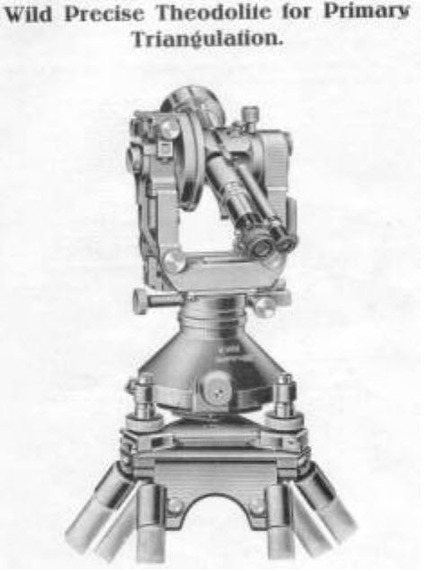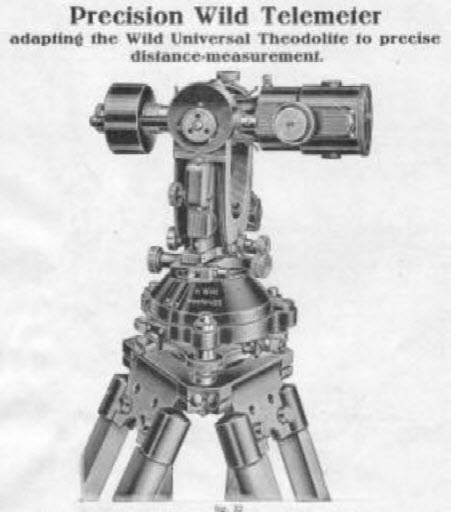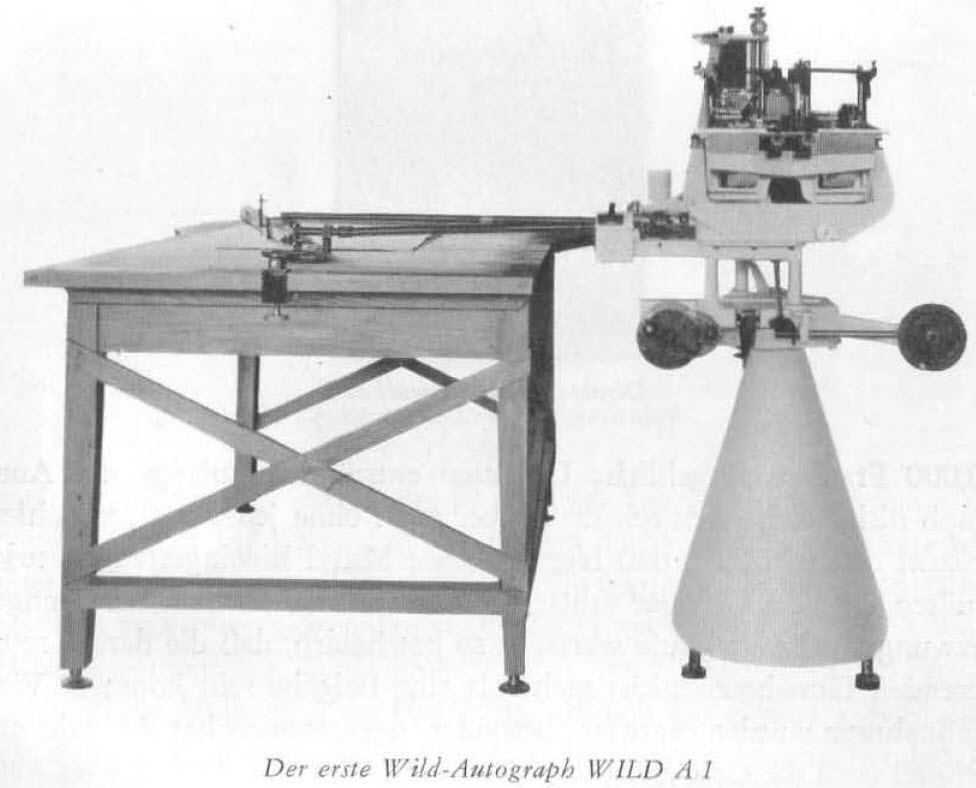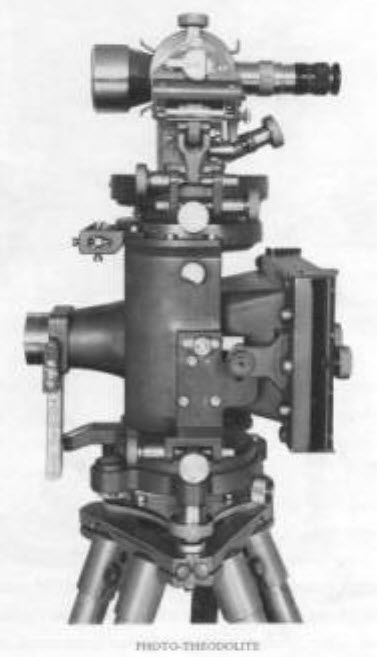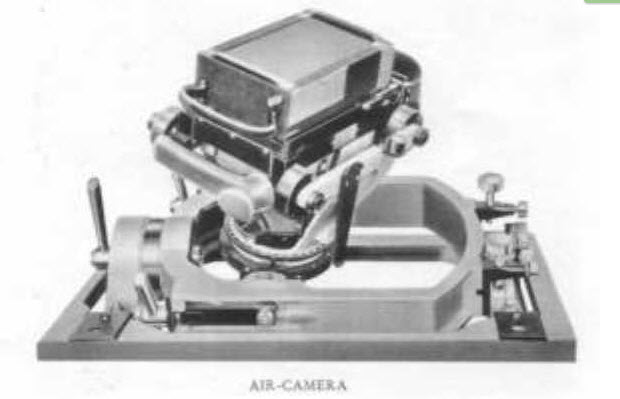Heinrich Wild bei Wild Heerbrugg
In 1920 the first Th1 with a one arc second direct reading microscope and coincidence reading of the circles was completed. This instrument began the modernization of theodolite construction.
When Heinrich Wild moved in the spring 1921 to Heerbrugg he realized his plans by founding, together with Dr. Robert Helbling from Flums and Jacob Schmidheiny from Heerbrugg the “Heinrich Wild, Werkstätte für Feinmechanik und Optik, Heerbrugg”. This organization was created April 26, 1921.
Dr. Wild then constructed in his own workshop a theodolite similar in design to the original Th1 but improved in many respects. It is widely known today by the name, Wild Universal Theodolite (or later as the famous WILD T2).
When Heinrich Wild moved in the spring 1921 to Heerbrugg he realized his plans by founding, together with Dr. Robert Helbling from Flums and Jacob Schmidheiny from Heerbrugg the “Heinrich Wild, Werkstätte für Feinmechanik und Optik, Heerbrugg”. This organization was created April 26, 1921.
Dr. Wild then constructed in his own workshop a theodolite similar in design to the original Th1 but improved in many respects. It is widely known today by the name, Wild Universal Theodolite (or later as the famous WILD T2).
The following are amongst the improvements in this form of the instrument:
As an accessory to the Universal Theodolite the precision telemeter was constructed, to be placed over the objective, raking use of a plane-parallel glass plate as an optical micrometer.
Amongst further instruments designed and constructed by Wild may be mentioned:
- Changing over of the images of the horizontal and vertical circles by means of a changeover prism.
- Bringing the eyepiece of the microscope immediately alongside that of the telescope.
- New system of packing the instrument in a metal case.
- Greatly increased precision of graduation and reading of the circles, rendering the instrument capable of replacing theodolites of twice its size of the old form.
As an accessory to the Universal Theodolite the precision telemeter was constructed, to be placed over the objective, raking use of a plane-parallel glass plate as an optical micrometer.
Amongst further instruments designed and constructed by Wild may be mentioned:
The level with circle, in which the circle is read of a special Arrangement of scale-microscope
After establishing his factory in Heerbrugg, Wild turned his attention to photogrammetry, and constructed an autograph differing from every existing construction in that the guide - rods were rigidly fixed to the plate-carriers. The solution of the problem here involved was first rendered possible by the invention of the correction-device for the automatic elimination of the projection-errors, which arise with this Arrangement.
It would take us too far afield to enter here on the numerous other interesting points of detail presented by the Wild Autograph.
It would take us too far afield to enter here on the numerous other interesting points of detail presented by the Wild Autograph.
From this short summary it will be evident how largely the inventions and constructions of Wild have contributed to the development of geodetic instruments; but for his inventive and creative talent, the manufacture of geodetic instruments would not have undergone the epoch-making changes and the unexpectedly rapid progress of which the results are manifest today throughout the world.
In 1931 he moved to Zurich and leaved Wild Heerbrugg on 7.December 1932. But he was working as a independent designer and developer still for them till 1935.
In 1931 he moved to Zurich and leaved Wild Heerbrugg on 7.December 1932. But he was working as a independent designer and developer still for them till 1935.

